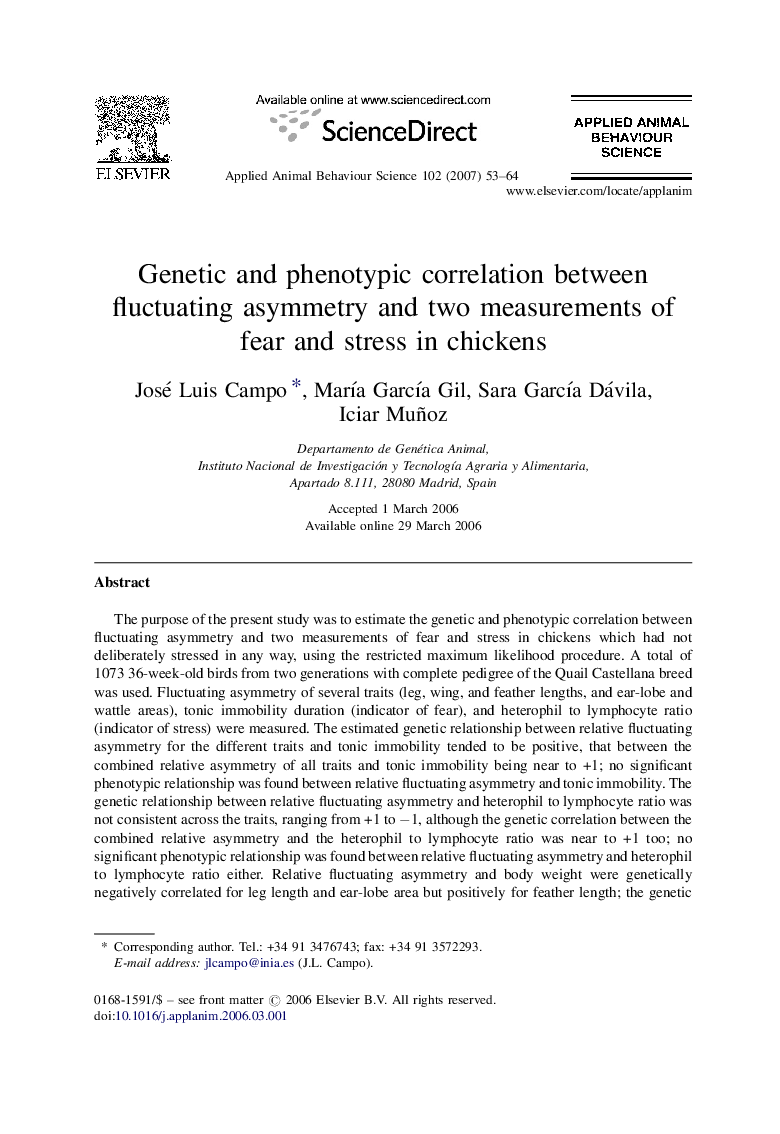| Article ID | Journal | Published Year | Pages | File Type |
|---|---|---|---|---|
| 6379850 | Applied Animal Behaviour Science | 2007 | 12 Pages |
Abstract
The purpose of the present study was to estimate the genetic and phenotypic correlation between fluctuating asymmetry and two measurements of fear and stress in chickens which had not deliberately stressed in any way, using the restricted maximum likelihood procedure. A total of 1073 36-week-old birds from two generations with complete pedigree of the Quail Castellana breed was used. Fluctuating asymmetry of several traits (leg, wing, and feather lengths, and ear-lobe and wattle areas), tonic immobility duration (indicator of fear), and heterophil to lymphocyte ratio (indicator of stress) were measured. The estimated genetic relationship between relative fluctuating asymmetry for the different traits and tonic immobility tended to be positive, that between the combined relative asymmetry of all traits and tonic immobility being near to +1; no significant phenotypic relationship was found between relative fluctuating asymmetry and tonic immobility. The genetic relationship between relative fluctuating asymmetry and heterophil to lymphocyte ratio was not consistent across the traits, ranging from +1 to â1, although the genetic correlation between the combined relative asymmetry and the heterophil to lymphocyte ratio was near to +1 too; no significant phenotypic relationship was found between relative fluctuating asymmetry and heterophil to lymphocyte ratio either. Relative fluctuating asymmetry and body weight were genetically negatively correlated for leg length and ear-lobe area but positively for feather length; the genetic correlation between the combined relative asymmetry and the body weight being near to â1; phenotypic relationships were not significantly different from zero. A significant negative genetic correlation between tonic immobility and heterophil to lymphocyte ratio was found, although the phenotypic association between these two measurements was zero. Phenotypic correlations always near to zero suggest that fluctuating asymmetry was not associated with duration of tonic immobility and heterophil to lymphocyte ratio in birds that have not been deliberately stressed.
Related Topics
Life Sciences
Agricultural and Biological Sciences
Animal Science and Zoology
Authors
José Luis Campo, MarÃa GarcÃa Gil, Sara GarcÃa Dávila, Iciar Muñoz,
